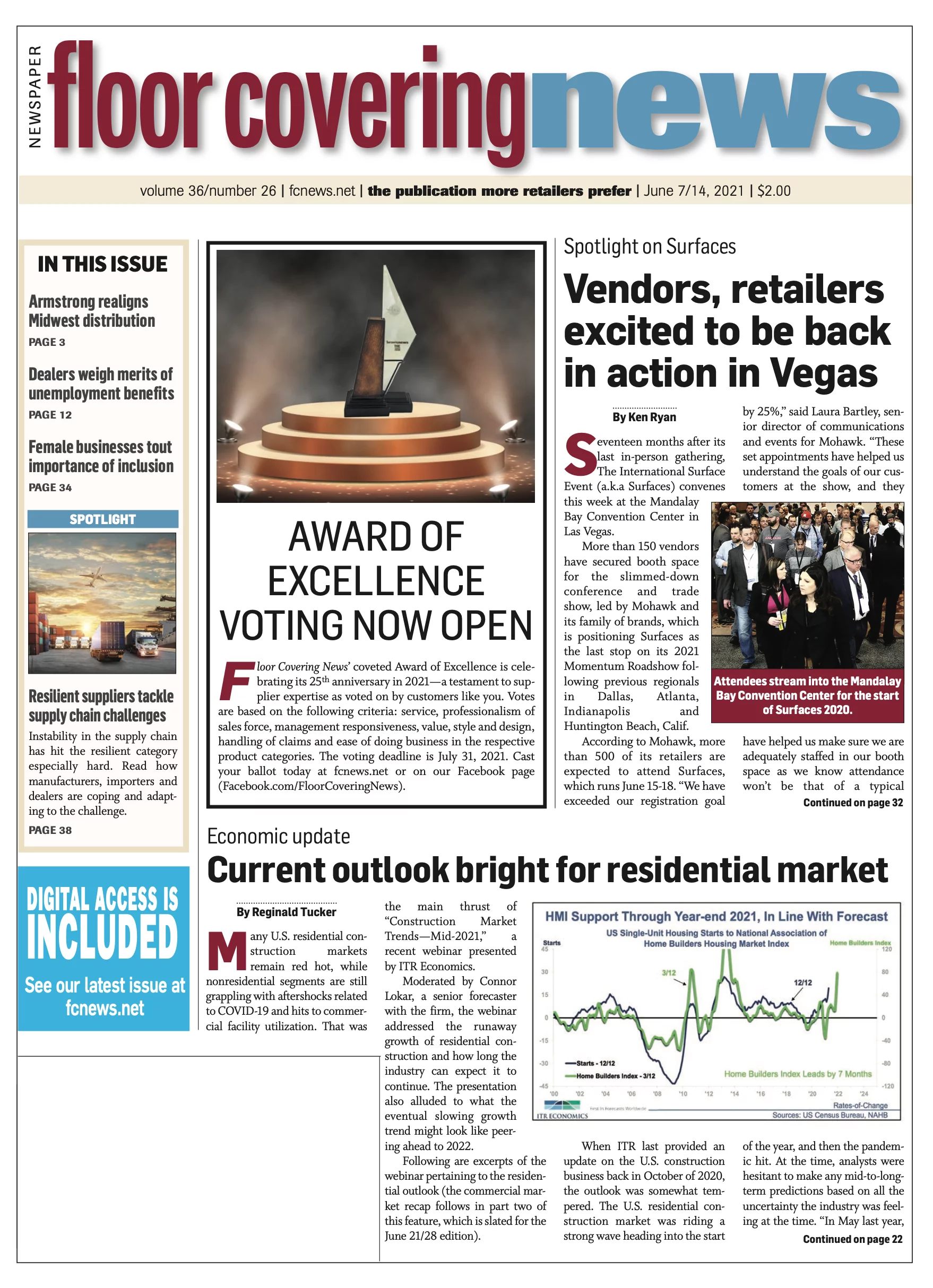 By Elisabeth McGowan Urban locales have historically been the go-to locations for folks seeking more job opportunities, restaurants, entertainment, etc. That big-city lifestyle is certainly attractive for a lot of people, specifically younger workers. However, once the pandemic invaded the country in 2020, populous, urban areas and urban retailers weren’t as desired as they have been in the past.
By Elisabeth McGowan Urban locales have historically been the go-to locations for folks seeking more job opportunities, restaurants, entertainment, etc. That big-city lifestyle is certainly attractive for a lot of people, specifically younger workers. However, once the pandemic invaded the country in 2020, populous, urban areas and urban retailers weren’t as desired as they have been in the past.
From shelter-in-place mandates to nuanced work-from-home opportunities, scores of consumers exited big cities. The more at-home activities people discovered, the more attractive the suburban lifestyle became. The accelerated migration trend that had already started had an extensive impact on all businesses, urban- and suburban-based flooring retailers included.
Housing statistics from 2020 revealed the densely populated areas that people were moving out of included New York, Philadelphia, San Francisco, Los Angeles and Detroit. Urban housing markets also saw a decline in overall home sales, according to a report by realtor.com.
How are suburban and urban retailers handling the shift? Suburban flooring retailers FCNews interviewed said they have seen a higher volume of customers and/or more purchases for new homes. Case in point is Naperville, Ill.-based Great Western Flooring, located outside of Chicago. Here, the urban housing market saw a decline in 2020, according to a realtor.com report. Lauren Voit, president, said managing the store’s new leads is like drinking from a fire hose—they can barely keep up as more consumers continue to purchase “higher-quality products and even luxury lines.”
Similarly, Ryan Commerce, president, Indoor City of Lancaster, Pa., said he has seen an influx of former urban residents coming in from Philadelphia and New York. He said he has even seen new faces from Chicago, Washington D.C. and Los Angeles. “The cost of living here is less expensive,” he explained. He said his customers are a cross-section between younger and older age groups. All in all, he said these customers tend to look for more sophisticated, higher-end products. This indicates that new homeowners have more money in their pockets to shop—perhaps a savings from what used to be earmarked for commuting expenses.
Prospective homeowners may also be taking advantage of the newfound savings after purchasing a less expensive property in a suburban area than that of a pricier metro area—although bidding wars are triggering rising home prices across the country. Financial security is an essential component in this suburban vs. urban trend. New buyers have quickly discovered that they have more room in the bank to spend on spicing up a new home with staples like flooring. Mary Anne Bowers, sales associate, Rocklin Sales, Rocklin, Calif., said many people left the urban Bay Area of San Francisco with a lot more money to spend and migrated toward the suburban region of Sacramento—one of the hottest housing markets today. “They come into the area and purchase their house with cash,” she said. “Then they have enough left over to do a remodel.”

Aside from the newbies moving into the suburbs, there are also those who already had second homes in less dense areas. Many of the fortunate homeowners with vacation homes chose to remain in the countryside where they’d normally just go to for a brief escape. Don Cantor, president of Lake Interiors Chelan—situated in the picturesque Washington state—attested to this. “Since [Seattle workers] can work from home, they came here and their friends followed,” he said. Lake Chelan is a tourist attraction with its visually appealing glacier lake sights, which explains why some businesses in Seattle could be seeing a decline in customers.
Ilaria Heiderich of Floorworks, Inc., Seattle said there has not been any migration toward the city. “Real estate inventory remains extremely tight in the greater Seattle area,” she said.
The well-documented exodus from crowded cities to suburbia—a phenomenon accelerated by the pandemic—has triggered new business opportunities for floor covering retailers. On the one hand, retailers report people who relocate to new towns find themselves in need of new flooring. At the same time, existing suburban residents are upgrading their properties to facilitate a more comfortable yet purposeful environment.
Birmingham, Ala.-based Brian’s Flooring & Design is a case in point. “We are witnessing a continuous increase in the consumers’ desire to shop for flooring specific to the new functionality needs of their homes and families,” said Mindy Arnette, residential sales manager. “We expect the multifunctional home design will dictate our flooring sales.”
Arnette is not alone. Palmer Johnson, owner of Johnson Floor & Home, Tulsa, Okla., also said he sees steady customer traffic in his store as a result of the migration. “Tulsa has been targeting remote workers with incentives to move to Tulsa through a program called Tulsa Remote,” Johnson explained, citing a program that specifically targets talented individuals who are living in metropolitan areas known for their high cost of living and relatively low rates of home ownership.
A tale of two cities
 It’s easy, then, to presume urban retailers are losing customers. After all, as many suburban retailers are seeing an influx of new customers because those customers ditched the cities and chose suburban life. However, Joel Schreier, president of Home Carpet One in Chicago, Ill., scoffed at the notion. “We’re booming,” he told FCNews. “Early in the pandemic, there was an acceleration of young couples [moving] to the suburbs, but a returning trend of empty nesters kicked the city back into gear.
It’s easy, then, to presume urban retailers are losing customers. After all, as many suburban retailers are seeing an influx of new customers because those customers ditched the cities and chose suburban life. However, Joel Schreier, president of Home Carpet One in Chicago, Ill., scoffed at the notion. “We’re booming,” he told FCNews. “Early in the pandemic, there was an acceleration of young couples [moving] to the suburbs, but a returning trend of empty nesters kicked the city back into gear.
The rise in older generations either staying in place in cities or moving into cities has put some businesses back at the top of their game, challenging the initial presumptions of economic struggles. Not only is Schreier seeing more customers, but he said he also noticed higher-priced products are on the rise—similar to Commerce’s observations. In fact, Home Carpet One is experiencing a spike in the demand for wood—a possible 300% increase—Schreier noted.
Other urban retailers, however, have not seen a change in business—no more but no less customers. Joseph Stern, owner of Boro Rug & Carpet, Brooklyn, N.Y., for example, said his store was not impacted by the suburban migration; business for him is the same as it was prior to the pandemic. He said this is due to New York’s revolving-door-styled rental housing.
“There are people moving out [of the city] but there’s always people moving in,” Stern said. He added that people originally from Brooklyn remain loyal customers, even if they moved to suburban areas of New York. He said his customer base is more comfortable commuting back to his store due to the trust they already built.
Regardless of the population shift, many retailers said they expect to thrive nonetheless. Schreier reported having a record April, with the same expectations for May.
Commerce said business will rely on whatever happens with work-from-home opportunities, but said he also believes people will move (or move back) to cities if the pandemic fully subsides.
Cantor, on the other hand, said COVID-19 deeply changed daily life in America and believes the desire for suburbia will continue. He cited bigger corporations being a driving force behind this because many have normalized the work-from-home culture. If this work method continues, he said, it’s likely newer workers will either crave the more spacious homes typically found in smaller towns or they will move to smaller cities that are traditionally less expensive compared to homes located in major cities.

